Abstract
In anaesthetized cats 3-phenoxypropylguanidine caused a contracture of the nictitating membrane, a dilatation of the pupil and a fall followed by a rise in the arterial blood pressure. In spinal preparations of cats the initial fall in blood pressure was usually absent and the rise in blood pressure subsided to a steady level, which was about 10 mm Hg above the initial pressure. The pressor action and the contracture of the nictitating membrane were inhibited by phenoxybenzamine and by previous treatment with reserpine, but were not abolished by adrenalectomy and bretylium. 3-Phenoxypropylguanidine potentiated the actions of adrenaline and noradrenaline, increased the blood glucose concentration of the rabbit and decreased the appetite of the cat. The action of tyramine on the cardiovascular system was inhibited by 3-phenoxypropylguanidine, but the stimulant action of tyramine on the nictitating membrane of the cat was not abolished by this substance. Although 3-phenoxypropylguanidine produced a local anaesthesia of long duration in guinea-pig skin, it failed to anaesthetize the rabbit cornea. The responses to stimulation of the preganglionic cervical sympathetic nerve of the cat and the great auricular nerve of the rabbit ear were not abolished by 3-phenoxypropylguanidine; neither did this substance abolish the nicotinic action of acetylcholine in atropinized cats. Contractions of the rat fundus to tryptamine and 5-hydroxytryptamine were antagonized by 3-phenoxypropylguanidine, but were potentiated by cocaine.
Full text
PDF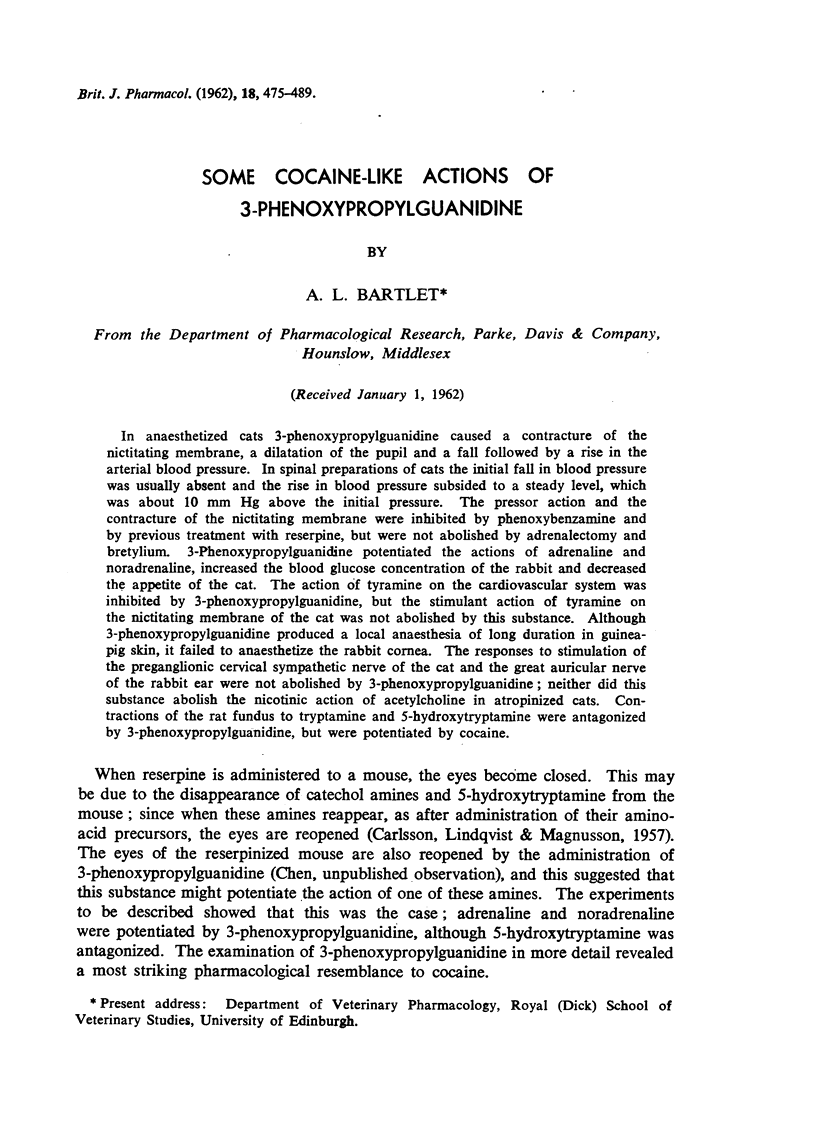
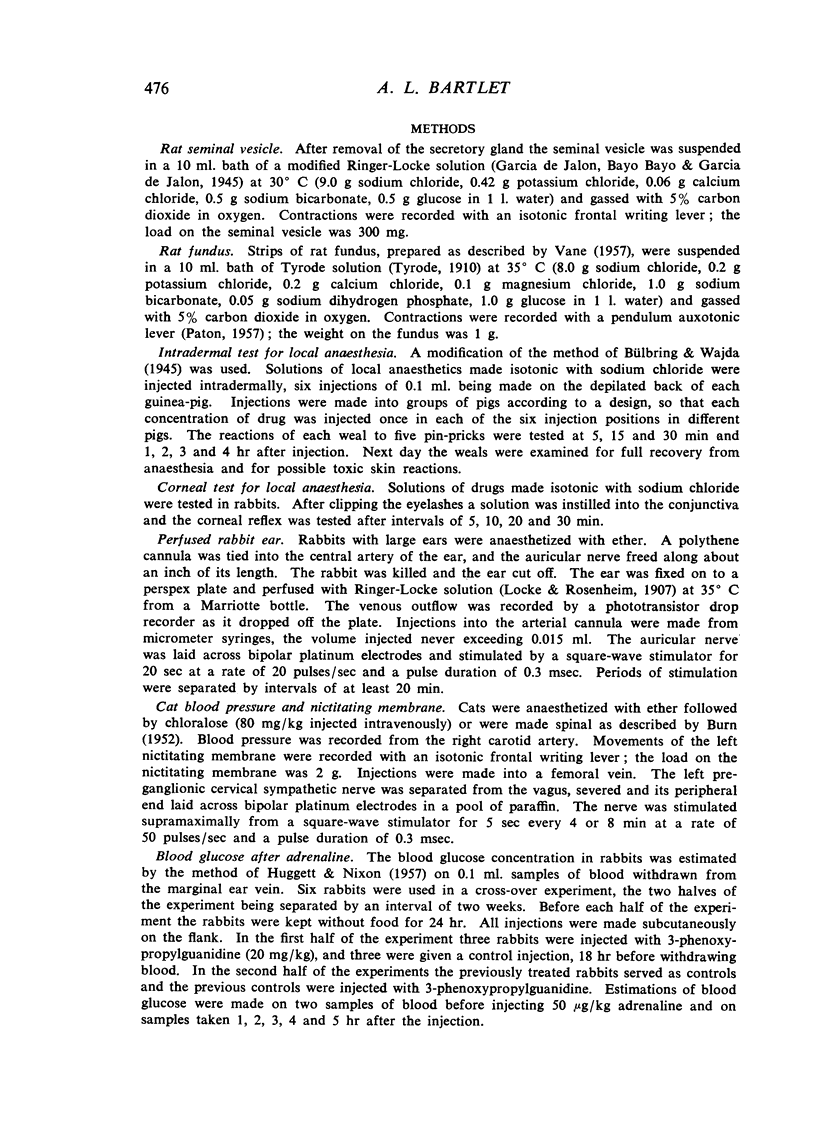

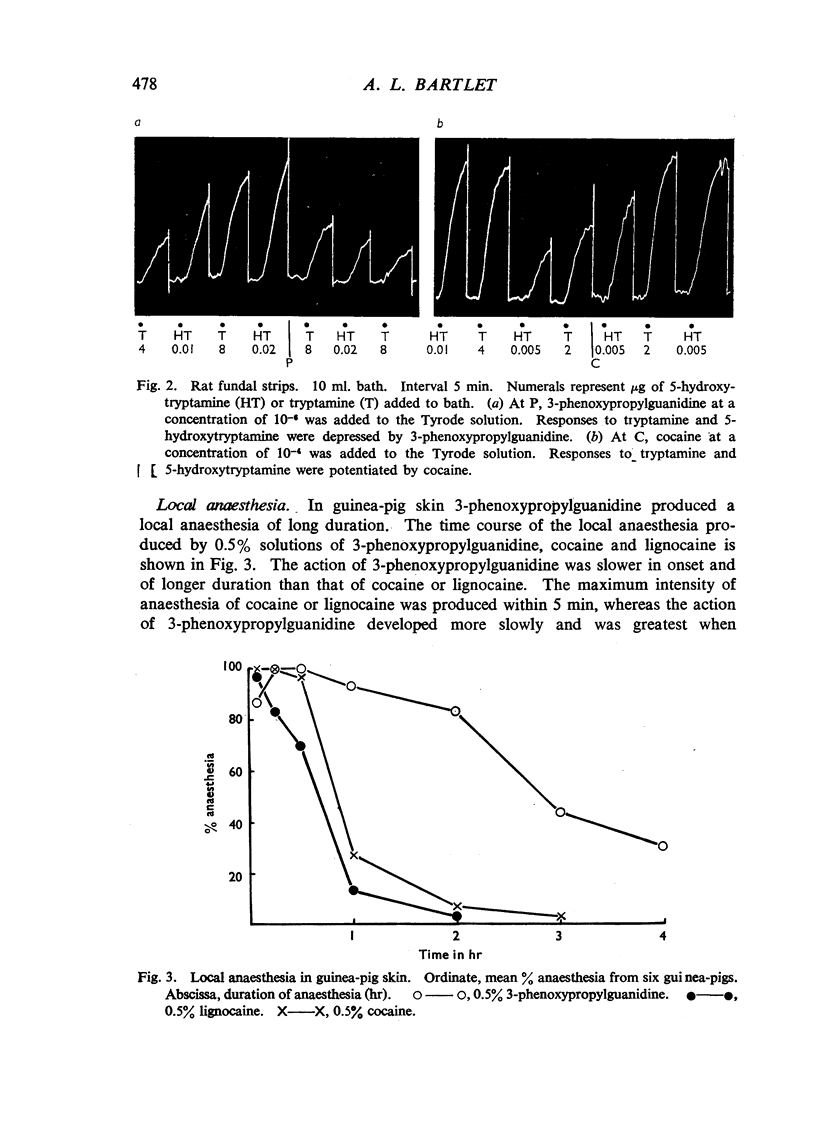
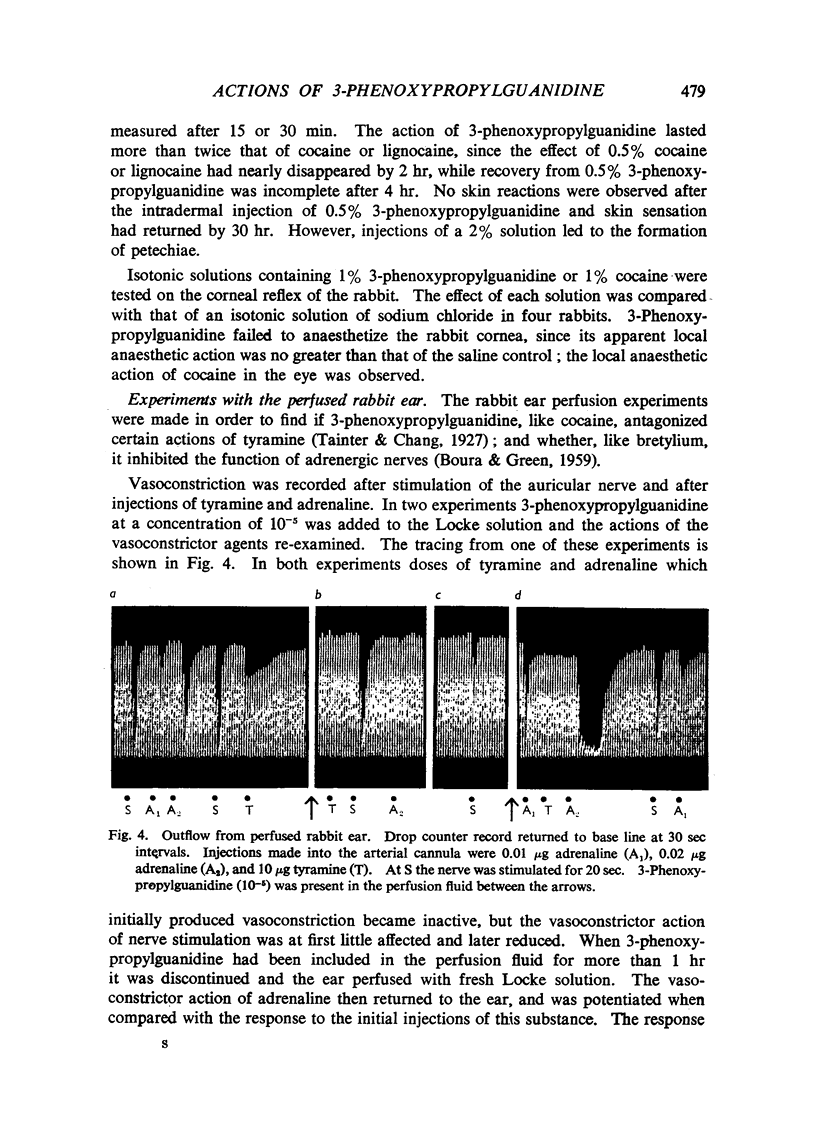


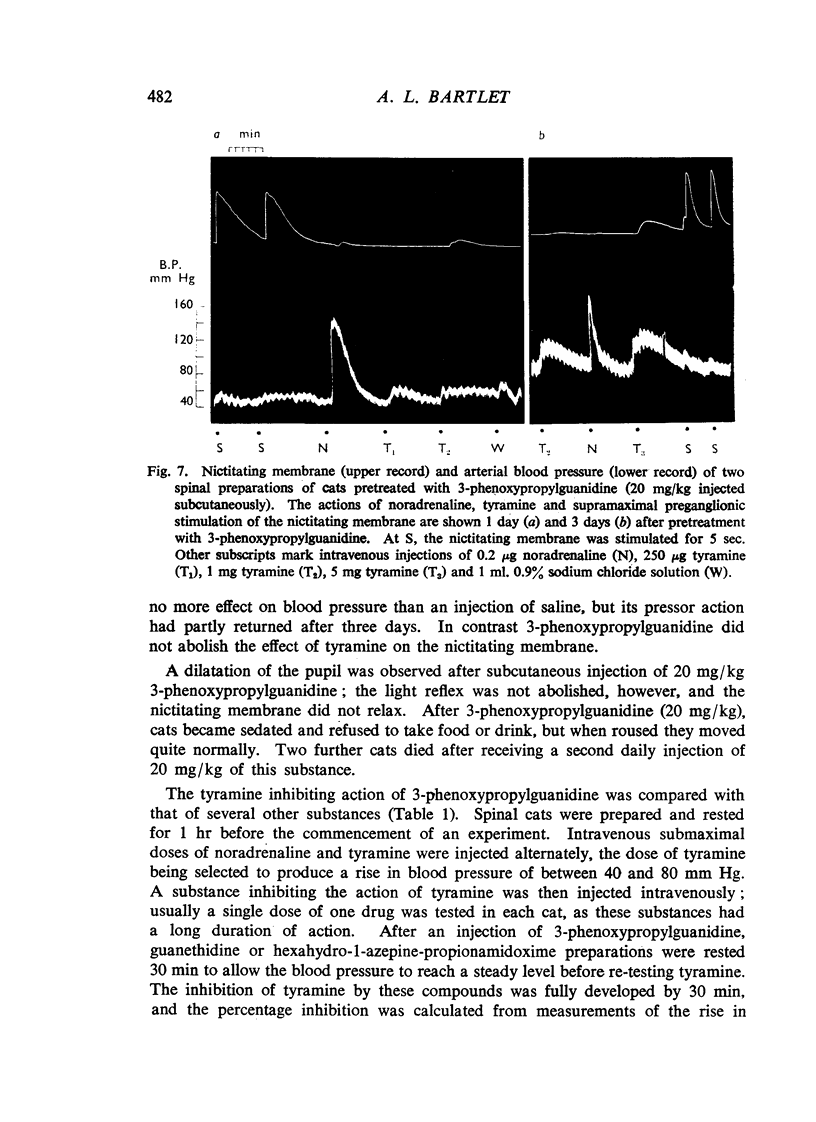
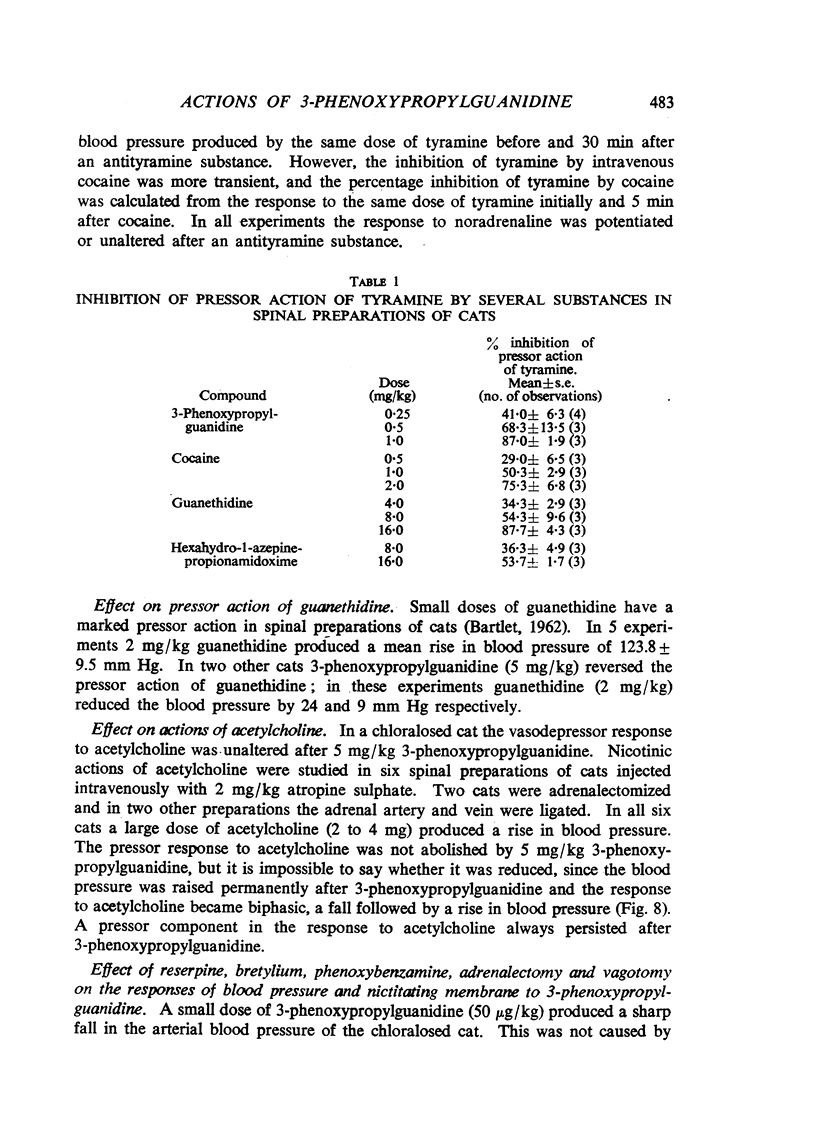
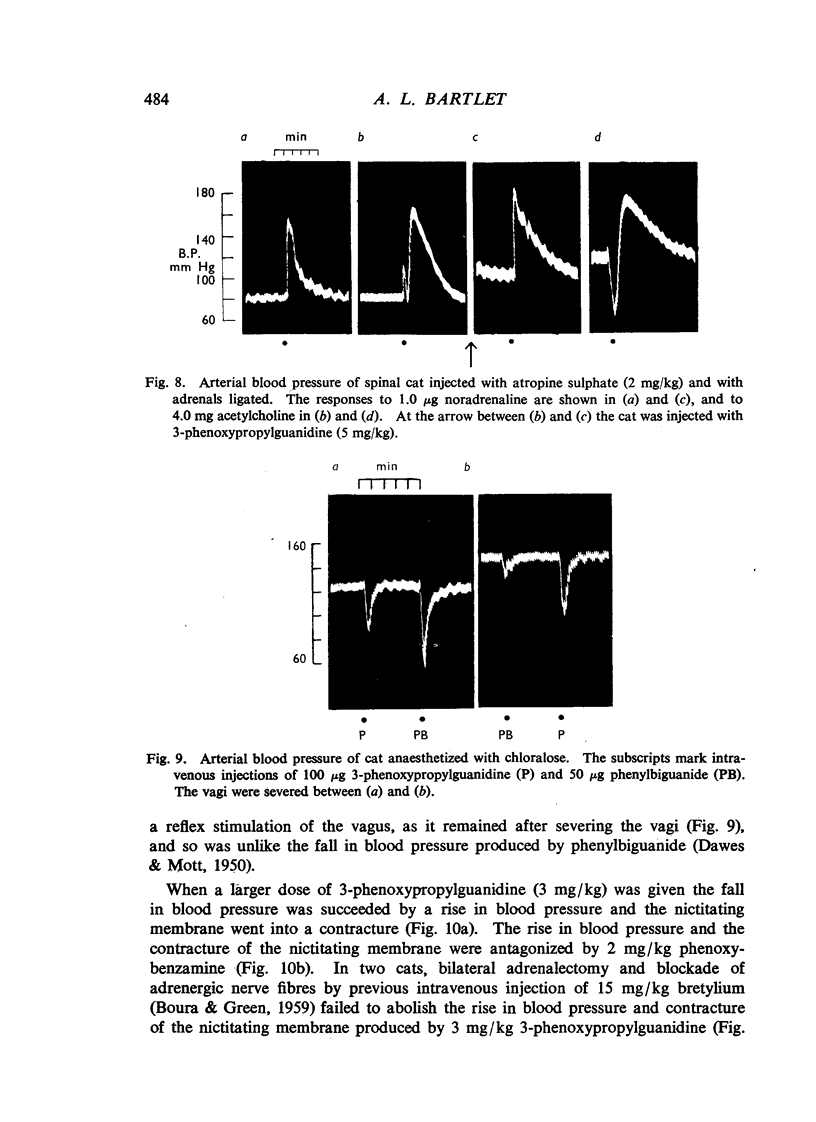
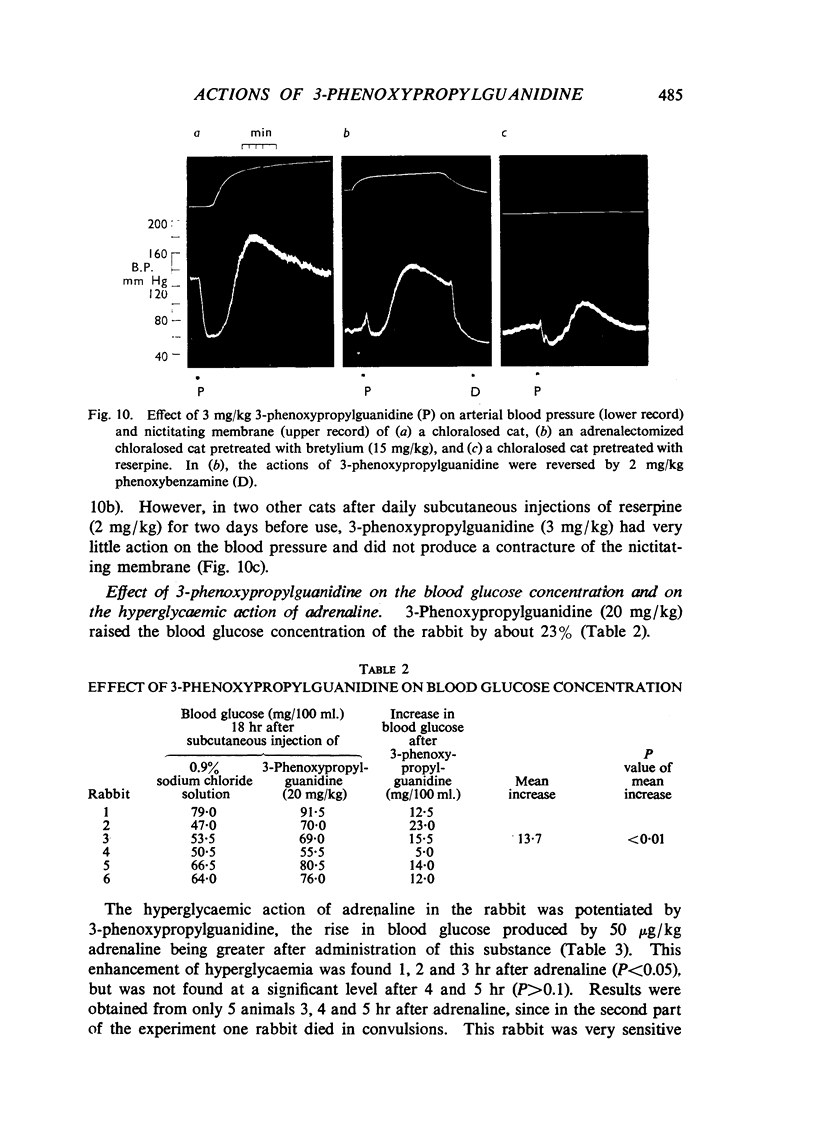
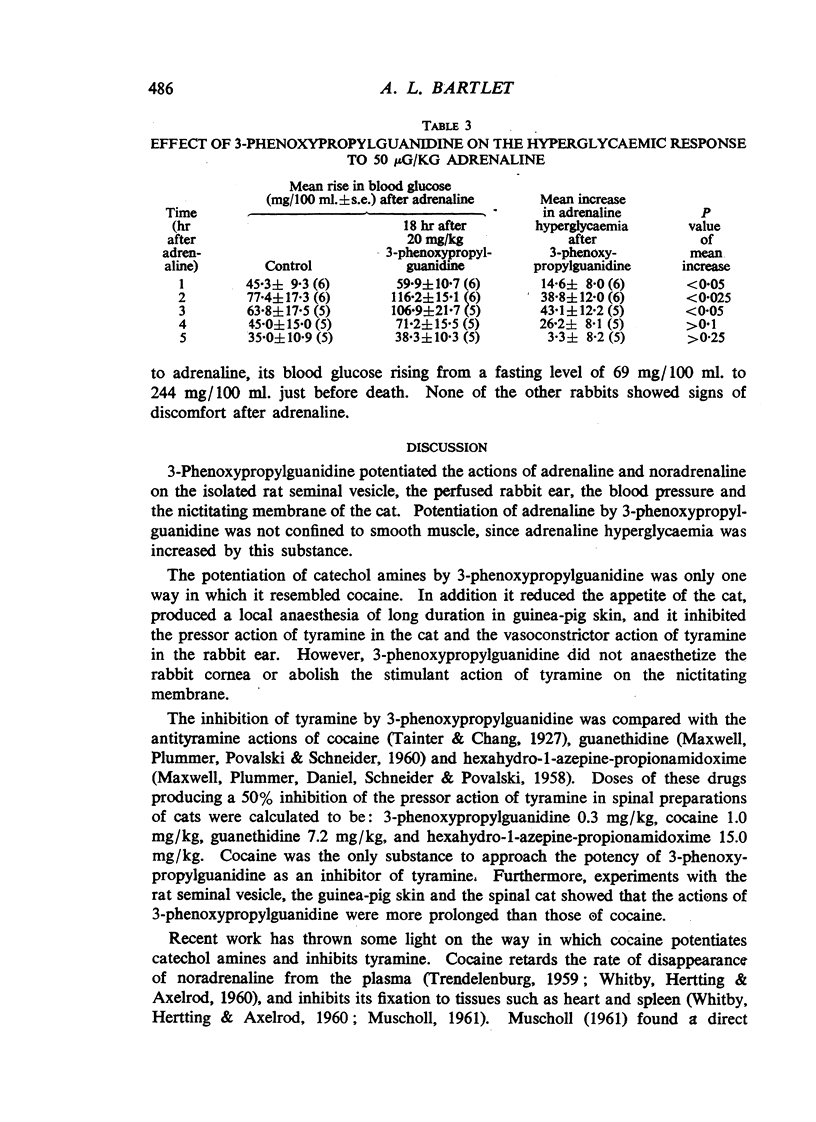
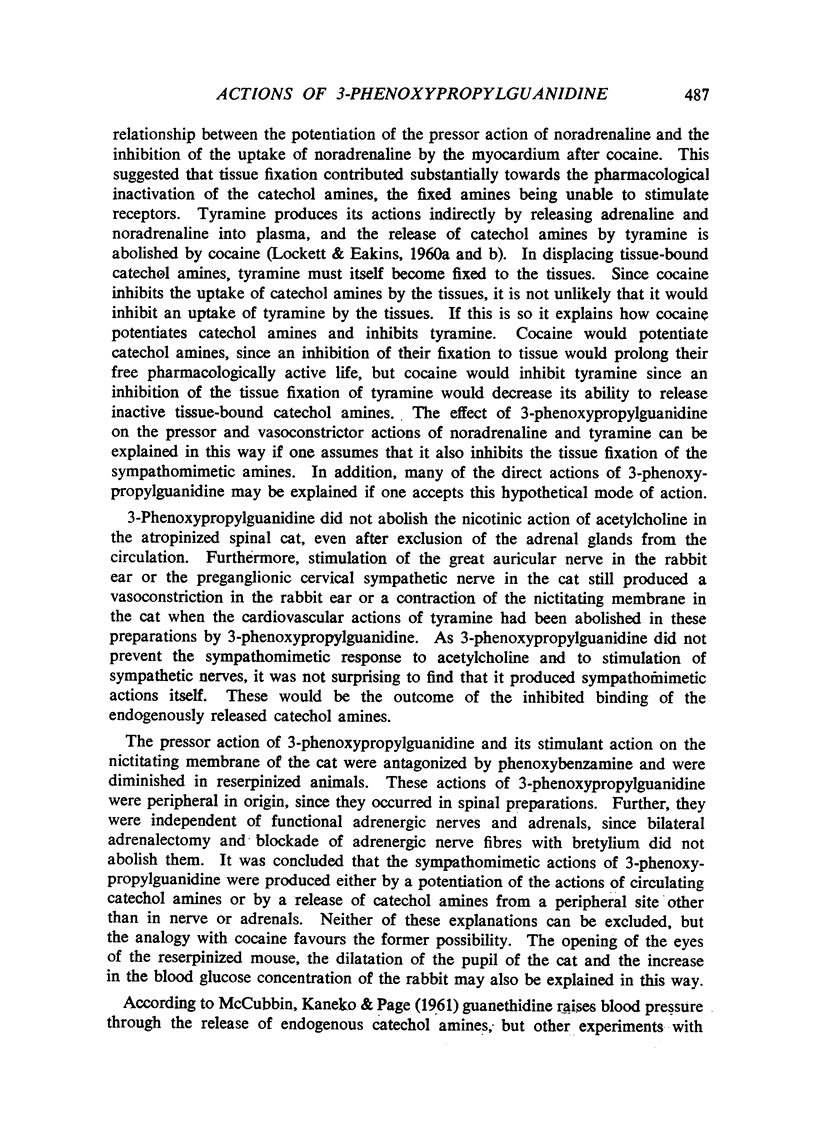

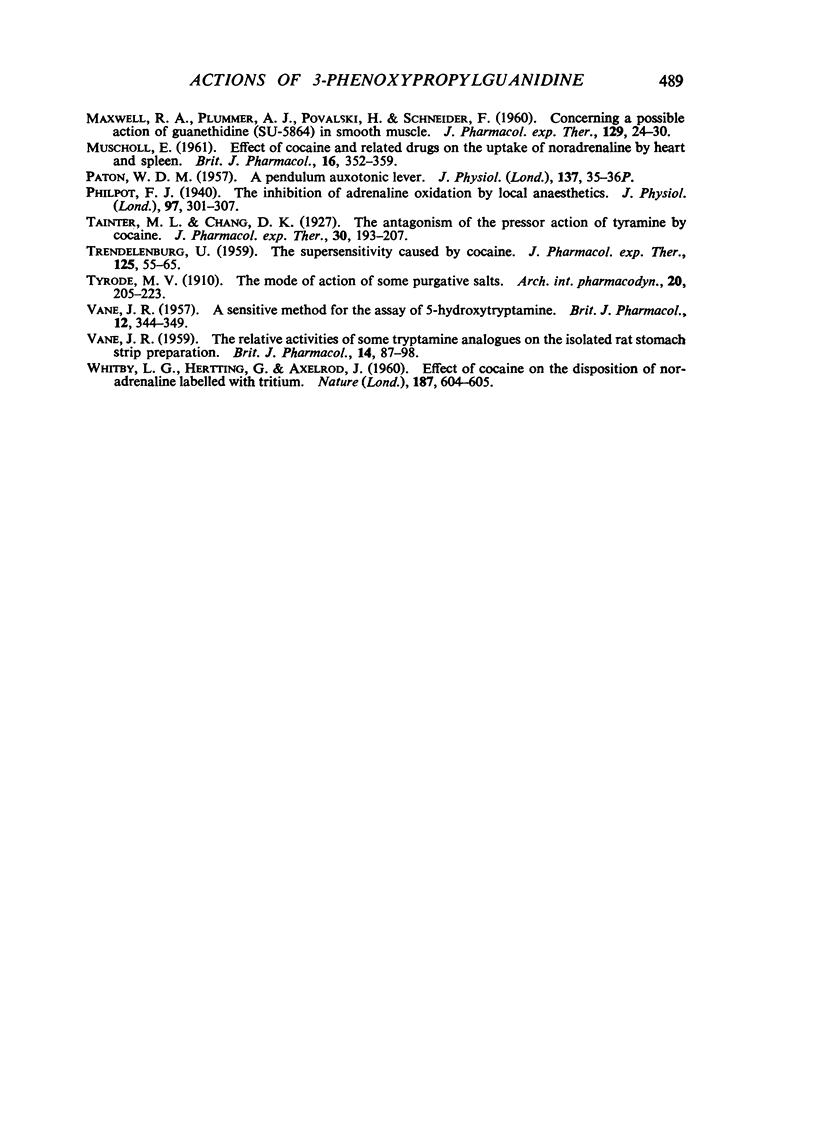
Selected References
These references are in PubMed. This may not be the complete list of references from this article.
- BARTLET A. L. The pressor action of guanethidine in the spinal cat. J Pharm Pharmacol. 1962 Feb;14:91–95. doi: 10.1111/j.2042-7158.1962.tb11058.x. [DOI] [PubMed] [Google Scholar]
- BOURA A. L., GREEN A. F. The actions of bretylium: adrenergic neurone blocking and other effects. Br J Pharmacol Chemother. 1959 Dec;14:536–548. doi: 10.1111/j.1476-5381.1959.tb00961.x. [DOI] [PMC free article] [PubMed] [Google Scholar]
- BURN J. H., RAND M. J. The action of sympathomimetic amines in animals treated with reserpine. J Physiol. 1958 Dec 4;144(2):314–336. doi: 10.1113/jphysiol.1958.sp006104. [DOI] [PMC free article] [PubMed] [Google Scholar]
- CARLSSON A., LINDQVIST M., MAGNUSSON T. 3,4-Dihydroxyphenylalanine and 5-hydroxytryptophan as reserpine antagonists. Nature. 1957 Nov 30;180(4596):1200–1200. doi: 10.1038/1801200a0. [DOI] [PubMed] [Google Scholar]
- DAWES G. S., MOTT J. C. Circulatory and respiratory reflexes caused by aromatic guanidines. Br J Pharmacol Chemother. 1950 Mar;5(1):65–76. doi: 10.1111/j.1476-5381.1950.tb00578.x. [DOI] [PMC free article] [PubMed] [Google Scholar]
- HUGGETT A. S., NIXON D. A. Use of glucose oxidase, peroxidase, and O-dianisidine in determination of blood and urinary glucose. Lancet. 1957 Aug 24;273(6991):368–370. doi: 10.1016/s0140-6736(57)92595-3. [DOI] [PubMed] [Google Scholar]
- LOCKETT M. F., EAKINS K. E. Chromatographic studies of the effect of intravenous injections of tyramine on the concentrations of adrenaline and noradrenaline in plasma. J Pharm Pharmacol. 1960 Sep;12:513–517. doi: 10.1111/j.2042-7158.1960.tb12702.x. [DOI] [PubMed] [Google Scholar]
- LOCKETT M. F., EAKINS K. E. The release of sympathetic amines by tyramine from the aortic walls of cats. J Pharm Pharmacol. 1960 Dec;12:720–725. doi: 10.1111/j.2042-7158.1960.tb12737.x. [DOI] [PubMed] [Google Scholar]
- Locke F. S., Rosenheim O. Contributions to the physiology of the isolated heart: The consumption of dextrose by mammalian cardiac muscle. J Physiol. 1907 Dec 31;36(4-5):205–220. doi: 10.1113/jphysiol.1907.sp001229. [DOI] [PMC free article] [PubMed] [Google Scholar]
- MAXWELL R. A., PLUMMER A. J., DANIEL A. I., SCHNEIDER F., POVALSKI H. Concerning the mechanisms of the cardiovascular actions of hexahydro-1-azepinepropionamidoxime (SU-4029). J Pharmacol Exp Ther. 1958 Oct;124(2):127–134. [PubMed] [Google Scholar]
- MCCUBBIN J. W., KANEKO Y., PAGE I. H. The peripheral cardiovascular actions of guanethidine in dogs. J Pharmacol Exp Ther. 1961 Mar;131:346–354. [PubMed] [Google Scholar]
- MUSCHOLL E. Effect of cocaine and related drugs on the uptake of noradrenaline by heart and spleen. Br J Pharmacol Chemother. 1961 Jun;16:352–359. doi: 10.1111/j.1476-5381.1961.tb01095.x. [DOI] [PMC free article] [PubMed] [Google Scholar]
- Philpot F. J. The inhibition of adrenaline oxidation by local anaesthetics. J Physiol. 1940 Jan 15;97(3):301–307. doi: 10.1113/jphysiol.1940.sp003808. [DOI] [PMC free article] [PubMed] [Google Scholar]
- TRENDELENBURG U. The supersensitivity caused by cocaine. J Pharmacol Exp Ther. 1959 Jan;125(1):55–65. [PubMed] [Google Scholar]
- VANE J. R. A sensitive method for the assay of 5-hydroxytryptamine. Br J Pharmacol Chemother. 1957 Sep;12(3):344–349. doi: 10.1111/j.1476-5381.1957.tb00146.x. [DOI] [PMC free article] [PubMed] [Google Scholar]
- VANE J. R. The relative activities of some tryptamine analogues on the isolated rat stomach strip preparation. Br J Pharmacol Chemother. 1959 Mar;14(1):87–98. doi: 10.1111/j.1476-5381.1959.tb00933.x. [DOI] [PMC free article] [PubMed] [Google Scholar]
- WHITBY L. G., HERTTING G., AXELROD J. Effect of cocaine on the disposition of noradrenaline labelled with tritium. Nature. 1960 Aug 13;187:604–605. doi: 10.1038/187604a0. [DOI] [PubMed] [Google Scholar]


